Many vehicles are fitted with all season tires when they leave the factory. Since they are built to provide a relatively quiet ride, good tread life and year-round performance, its no wonder why they are so popular. All season tires offer versatile performance and are designed to perform in a variety of conditions including wet roads and light winter driving. All season tires are designed to offer a combination of benefits from summer and winter tires.
In order to provide good performance in a variety of driving conditions, all-season tires inevitably have to compromise some max summer and winter performance capabilities.That means all-season tires won’t provide the same amount of extreme grip and sharp handling of a summer tire. Likewise, an all-season tire is not designed to handle extreme winter conditions like trekking through snow or driving on ice.
Think of all-season tires like tennis shoes. You can wear tennis shoes all year, but they aren’t ideal for all situations. It’d be much better to have flip flops on the beach in the summer and boots for the snow.
All-season tire technology offers great year-round performance for drivers who live in moderate climates and do not frequently encounter extreme cold, ice, and snow in the winter months.
When it comes to driving in winter weather, having the right tire matters. From heavy snowfall to black ice, winter roads are extremely unpredictable. These conditions challenge tires to provide traction like no other season of the year. The combination of cold temperatures, ice, and snow can be best met by winter tires, which are specially designed to perform in winter conditions.
When it comes to driving in winter weather, having the right tire matters. From heavy snowfall to black ice, winter roads are extremely unpredictable. These conditions challenge tires to provide traction like no other season of the year. The combination of cold temperatures, ice, and snow can be best met by winter tires, which are specially designed to perform in winter conditions.
From heavy snowfall to black ice, winter roads are extremely unpredictable. These conditions challenge tires to provide traction like no other season of the year. The combination of cold temperatures, ice, and snow can be best met by winter tires, which are specially designed to perform in winter conditions.
There are specific features of winter tires that make them unique: tread rubber, tread depth and patterns, and biting edges.
The Tread Rubber - In extreme cold temperatures, the tread rubber of an all season or summer tire stiffens and becomes less able to provide sufficient traction. To combat this, tread rubber compounds of winter tires are designed to remain flexible, allowing the tire to grip the road better.
The Tread Depth and Patterns - A unique feature of winter tires is deeper tread depths and unique tread patterns. Deeper tread depths reduce snow buildup and provide better traction on the snow. Winter tire tread patterns are designed to channel snow and slush and expel water.
Biting Edges - Winter tires also feature an increased number of biting edges and high sipe densities, or in other words, thousands of tiny slits in the tread that provide traction on ice.
Bridgestone Blizzak tires also feature a proprietary multi-cell compound that acts as a sponge to help remove the thin layer of water that resides on ice and cause slippage. This helps to improve traction in icy conditions so you can maintain control of your vehicle. Check out our Blizzak DM-V2 winter tire for a closer look at how this tire provides confident driving in snow and icy conditions.
The solution to the winter or snow tires vs. all-season tires question will depend on where you live and the conditions in which you drive.
If you only see a few snow flurries each year and slick, icy roads are more of a fluke than an annual ordeal, all-season tires are probably the way to go. But if you know there’s a period when icy roads are always an issue, mounting winter tires isn’t an over-the-top precaution – it’s an essential safety measure that could save your life.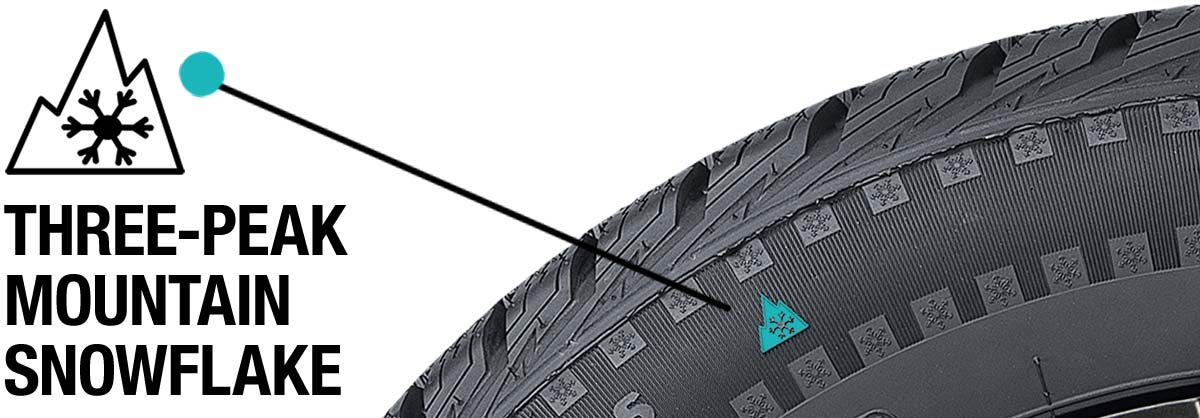
When mounting winter tires for the season, always install a full set. Just changing out the front tires increases the likelihood that the rear tires will skid. Likewise, just putting snow tires on the rear wheels could cause the front tires to lose traction and make it impossible to steer your vehicle.
And remember to re-mount those all-season tires when spring rolls around. While winter tires are undeniably superior in extreme winter conditions, they’ll wear down faster on warm, dry pavement.
Shop Snow or All-Season tires and view product level tire technology details that are compatible with your driving needs.
When it comes to driving in winter weather, having the right snow tires matters. Watch the video to see how Bridgestone Blizzak premium winter tires are designed to deliver optimal snow and ice performance.
FIND YOUR WINTER TIRE
There’s never a good time for a flat.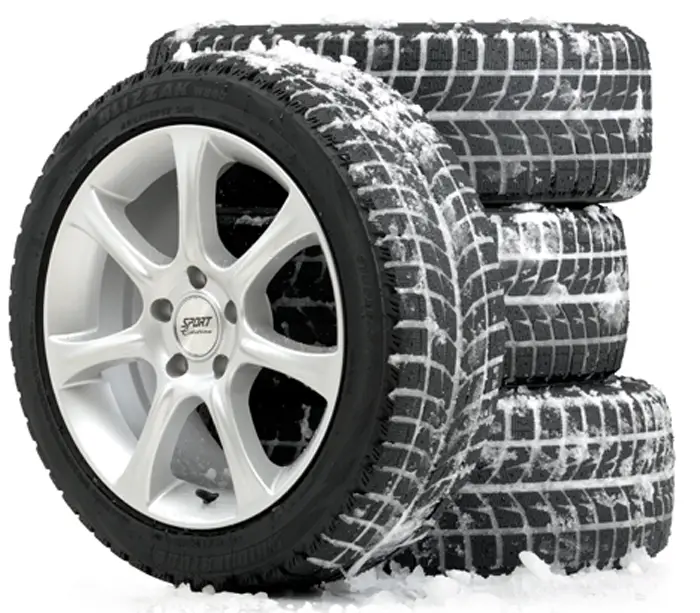 That’s why Bridgestone DriveGuard tires are masterfully engineered to keep you moving for up to 50 miles at speeds up to 50 MPH without disruption.
That’s why Bridgestone DriveGuard tires are masterfully engineered to keep you moving for up to 50 miles at speeds up to 50 MPH without disruption.
See Details Find Your Fit
If you wonder whether your “all-season” tires perform just as well in snow as the best snow tires, we have the answer. They don’t, and it’s really not even close. Most snow tires, or “winter tires” as they are sometimes known, outperform all-season tires in snow, rain and even on ice. Here is a look at the benefits of snow tires, the technology that makes them work, and some of the pros and cons of putting them on your vehicle.
Silvio Verrecchia / EyeEm
On This Page
Thanks to a couple of advances in tire technology, winter tires perform much better than the traditional “snow” tires you may remember (if you’re old enough).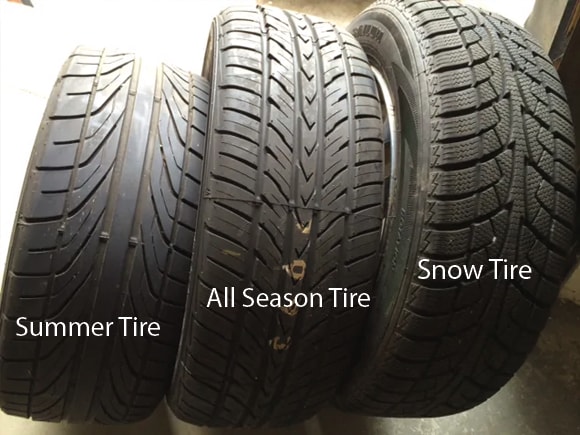 They work better in snow, ice, slush and mud and on cold, dry pavement. The rubber compounds are entirely new. Most manufacturers now use rubber compounds that include silica, and some spruce up the formula even formula with traction bits and hollow “cells” that squeegee and suction water off the road. Tread designs are also far more aggressive to provide better acceleration and shorter stopping distances. Winter tires have more sipes (cuts in the tread) than all-season tires so that they can squeegee more water off the road. Saw-tooth sipes provide more surface area and cut into snow and slush better than straight sipes. The “micro pump” holes in the tread act like plungers to suck water off the road and then spit it out as the tire rolls.
They work better in snow, ice, slush and mud and on cold, dry pavement. The rubber compounds are entirely new. Most manufacturers now use rubber compounds that include silica, and some spruce up the formula even formula with traction bits and hollow “cells” that squeegee and suction water off the road. Tread designs are also far more aggressive to provide better acceleration and shorter stopping distances. Winter tires have more sipes (cuts in the tread) than all-season tires so that they can squeegee more water off the road. Saw-tooth sipes provide more surface area and cut into snow and slush better than straight sipes. The “micro pump” holes in the tread act like plungers to suck water off the road and then spit it out as the tire rolls.
All-season rubber compounds literally skate on ice. But winter tires are made with softer rubber compounds and added silica to give them more flexibility and grip on ice. And the special tread removes more water from the ice.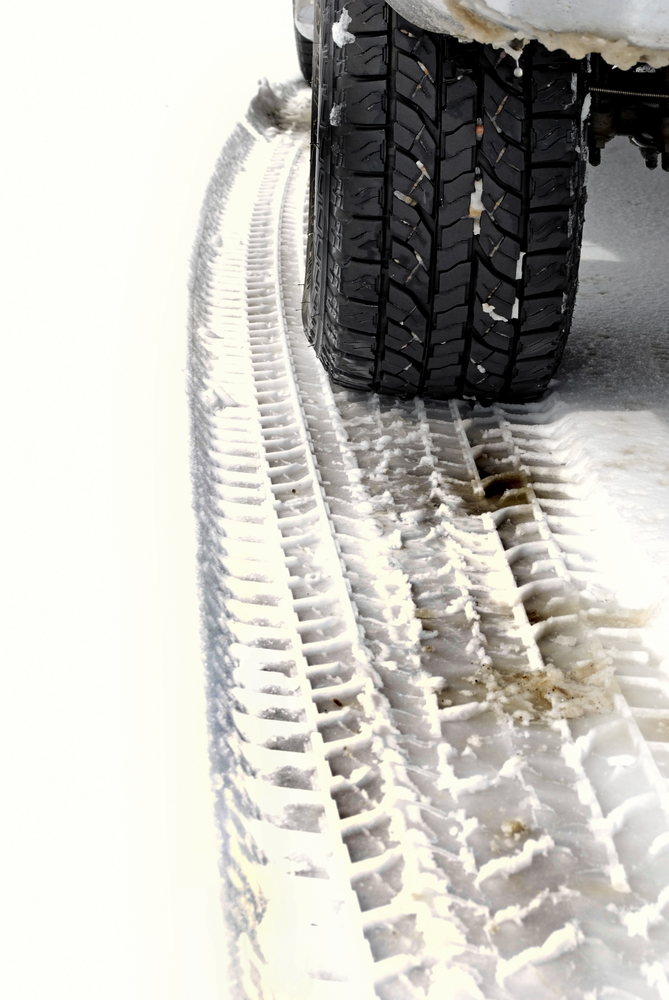 The test results show that winter tires outperform all-season tires on ice, too.
The test results show that winter tires outperform all-season tires on ice, too.
Tirerack.com used an indoor ice rink and timed the acceleration from a dead stop and measured stopping distances from 10 mph (Figure B). Winter tires accelerated faster. When taking a 90-degree turn at 10 mph, the car with winter tires stayed within the marked driving lane, while the car with all-season tires skidded out. That kind of cornering performance can mean the difference between avoiding an accident and causing one.
digi_guru/Getty Images
A set of four winter tires costs $600 or more, depending on your wheel size. If you have the tires mounted on your existing wheels, you’ll have to pay a shop to swap them each spring and fall. Most shops charge about $18 apiece to demount your all-season tires, mount the winter tires, balance and install them. However, if you buy an extra set of wheels and tire pressure sensors ($480 per set), you’ll save at least $50 on each changeover. Don’t think you can skip the tire pressure sensors—the shop can’t legally install wheels without tire pressure sensors if your vehicle was already equipped with them.
Don’t think you can skip the tire pressure sensors—the shop can’t legally install wheels without tire pressure sensors if your vehicle was already equipped with them.
Sure, winter tires cost a lot. But keep in mind that you’re getting a lot for your money. When you factor in the better stopping distance and handling in turns, it’s easy to see how winter tires could prevent an “at-fault” accident. If your collision deductible is in the $500 to $1,000 range, winter tires could actually pay for themselves in a single season if they keep you out of an accident.
Here’s another way to analyze the costs. Winter tires last about five years or 35,000 miles. Those are miles you won’t be putting on your all-season tires. So if buy a full set of new wheels, the true cost of winter tires comes out to about $150 per year for the first five years. Then if you buy a second set for those same wheels, the cost drops to just $65 per year. It’s worth the relatively small annual cost involved to get the extra stopping power and better handling that can help you avoid an accident.
Tire manufacturers make multiple winter tire models for specific winter conditions. So get expert advice from your local tire dealer to match the tire to your vehicle, your climate and your driving habits.
Mounting winter tires on the second set of wheels saves money over swapping tires on a single set of wheels. But you can save even more if you negotiate a package deal with the tire shop. Get a price for the tires, wheels, sensors and free seasonal mounting. If your shop offers a “Tire Hotel” service to store your off-season tires, ask them to throw that into the package as well. That way you won’t have to haul the off-season tires back and forth or store them in your garage.
Up next, check out if snow chains are worth it for the Winter season and learn more about the ideal tire pressure in Winter.
Today, motorists, in an effort to improve their steel horses, choose spare parts and components wisely. They look at ratings, reviews, test drives, reviews. Especially all this applies to such an action as the choice of tires for a car. There are many difficulties here, let's at least briefly consider them.
They look at ratings, reviews, test drives, reviews. Especially all this applies to such an action as the choice of tires for a car. There are many difficulties here, let's at least briefly consider them.
Today, motorists in an effort to improve their steel horses choose spare parts and components wisely. They look at ratings, reviews, test drives, reviews. Especially all this applies to such an action as the choice of tires for a car. There are many difficulties here, let's at least briefly consider them. The range of car tires is enormously diverse.
Here you can find different brands, sizes and other indicators. But we must learn that absolutely all tires are winter, summer, and all-weather tires. The latter is of great interest to many motorists. They want to buy one set for winter and summer time, saving a lot of money. Indeed, why not buy all-season tires instead of winter and summer ones.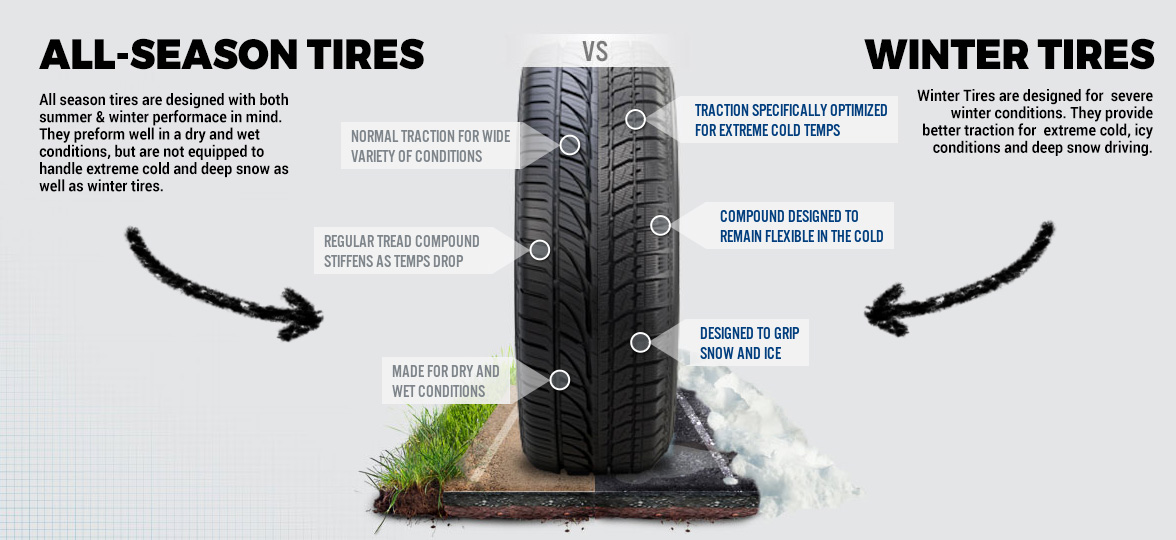
Can all-season tires be used in winter and at any other time of the year? Skeptical citizens are wondering - why then do we need separate summer and separate winter tires, if there is a universal all-season option? In theory, all-season tires are required to make the car stable on dry and wet, as well as icy and snowy road surfaces. Rubber must retain the necessary properties in any weather, and the tread must hold the car firmly on all surfaces.
But is it possible to choose the chemical composition of rubber and draw such a tread so that the finished product fully meets all these requirements? It turns out not. Numerous test drives have confirmed that all-season tires are significantly inferior to winter and summer tires in such important indicators as:
In all-season ice conditions, you run the risk of skidding, and in the summer after a downpour, hydroplaning.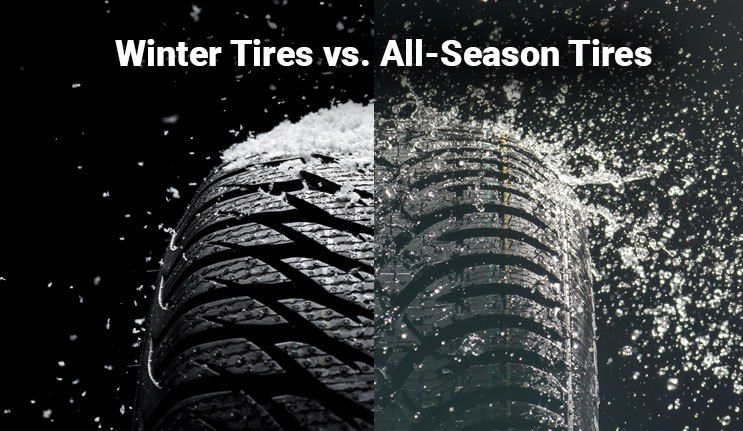 The consequences here can be equally sad. But then why are all-season tires still available? The fact is that in some cases it is still possible, and sometimes it is necessary to use it.
The consequences here can be equally sad. But then why are all-season tires still available? The fact is that in some cases it is still possible, and sometimes it is necessary to use it.
First of all, these are the off-season and mild winters, when the air temperature moves around the zero mark within 5 degrees on both sides. Snow falls and melts almost immediately, and snow porridge forms on the road, flavored with a certain proportion of reagents. It’s bad to drive on summer and winter tires here, especially if the winter ones are with spikes. But the all-season behaves most adequately.
Motorists sometimes good-naturedly trust different words and stories about certain spare parts, accessories and much more. However, sometimes the information does not even correspond to reality at all, and it seems like it is not worth believing in it. Sometimes you can hear about how many car owners put all-season tires on them and drive without any problems all year round.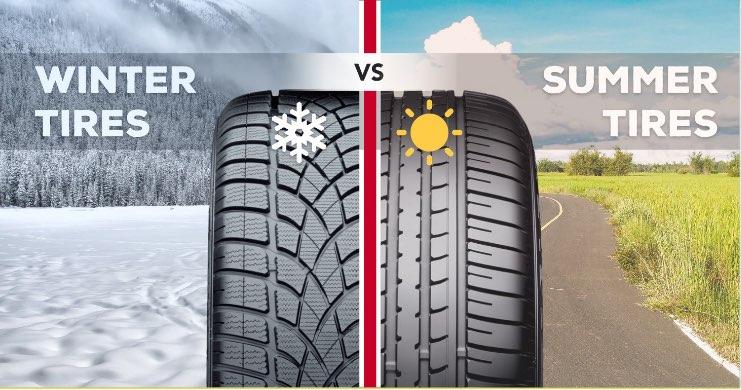
At least briefly familiarize yourself with the features of summer and winter tires. It will become clear that driving on all-season tires is not only unprofitable, but also not always safe. What is the difference between winter and summer tires? Here are two fundamental differences that must be taken into account:
A summer tire should be tough enough in summer, not “spread” on hot asphalt in the heat. Otherwise, the driver will have to face violations and even loss of control. If you go on such tires in the winter. Then even at low positive temperatures it will become quite tough, literally oak.
There will be no depreciation and, in fact, no controllability in the normal sense of these terms. Winter tires are made from a mixture that remains soft enough even in severe cold. It is the softness needed to increase the contact patch with the road that plays a very important role in your every winter trip. In summer, winter tires are so soft that at even the slightest significant speeds, a complete loss of control is possible. At the same time, the tread of winter tires is not designed for summer roads at all. But more on that later.
In summer, winter tires are so soft that at even the slightest significant speeds, a complete loss of control is possible. At the same time, the tread of winter tires is not designed for summer roads at all. But more on that later.
Summer tires must hold the car firmly on asphalt, including wet, preventing hydroplaning. For this, there are special grooves, lamellas, grooves, etc. Summer tires also require the ability to keep the car on gravel. In winter, such a pattern will not save either from ice or snow, and even the rubber itself will harden. There will be a disaster. For winter tires, the tread is designed to keep the car perfectly on ice, to have a minimum braking distance even in the most extreme winter conditions. Even winter tires are often equipped with studs, which help to maintain directional stability on packed snow.
From this information, it becomes obvious that it is simply impossible to fully realize the properties of winter and summer tires in the all-season category - at least not without magic.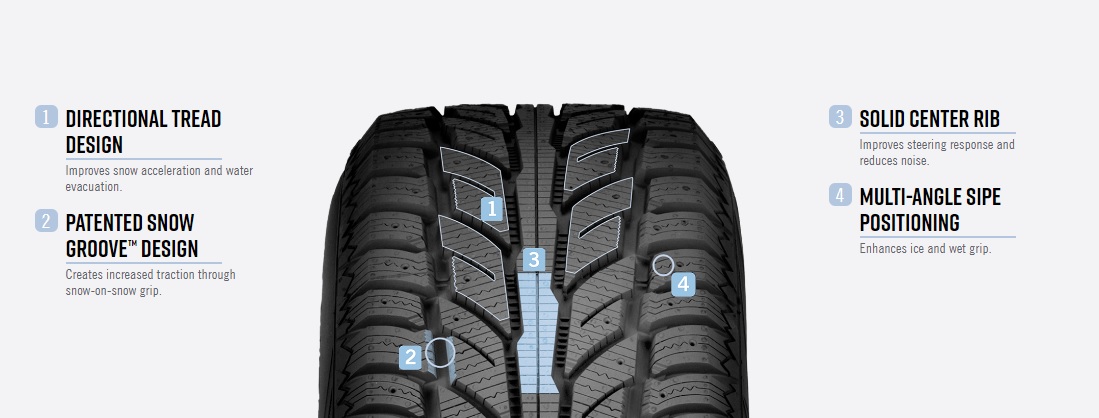 And how all-season tires behave in winter, depending on the manufacturer and the characteristics of the model, it will be difficult to give an unambiguous answer.
And how all-season tires behave in winter, depending on the manufacturer and the characteristics of the model, it will be difficult to give an unambiguous answer.
Summer tires are specially designed for optimum performance in summer conditions and warm climates. Compared to other seasonal tire types, such as winter tires, the features of summer tires can be subtle. Aren't all quality tires designed for warm conditions, wet or dry?
While true, summer tires are uniquely geared towards ideal performance in warm conditions only (both dry and wet). By taking into account other seasonal conditions, tire manufacturers can focus on maximizing the performance and performance of strictly summer tires, and this is a real advantage.
By taking into account other seasonal conditions, tire manufacturers can focus on maximizing the performance and performance of strictly summer tires, and this is a real advantage.
In particular, ultra high performance summer tires (UHP tires) excel in this narrow engineering focus. UHP grade summer tires provide truly exceptional warm-weather grip and performance in both dry and wet road conditions.
However, the flip side of the coin is that summer tires have real, very severe climatic and road conditions limitations. In particular, summer tires are not designed to provide sufficient grip when temperatures reach (or fall below) freezing. And if the roads regularly get a small amount of winter precipitation, summer tires will not provide proper control of the vehicle.
If your climate zone experiences a winter season with temperatures below freezing, summer tires are not suitable for year-round use. If you like the idea of optimized warm-weather performance provided by summer tires, you might want to consider seasonal tire changes.
While all-season tires lack grip in warm weather, they easily make up for their wide range of uses. While summer tires have non-negotiable seasonal and temperature limits, all-season tires do not. If you prefer the convenience of one set of tires for year-round use, and winter season temperatures drop below freezing in your latitudes, then all-season tires are the obvious choice for you.
All-season tires can be used safely in temperatures of 40°C and below zero, on dry and wet roads in this temperature range, as well as in conditions of light winter precipitation. However, all-season tires also have limitations. While most are designed to provide adequate grip in moderate winter conditions, all-season tires should not be used in blizzard conditions.
While today's all-season UHP tires offer warm grip and overall performance close to their UHP summer counterparts, it's on another level.
If you do not know how certain all-season tires can behave and whether they are worth buying at all, then placing an order in the InterShyna online store you can always be sure of the quality of these products.